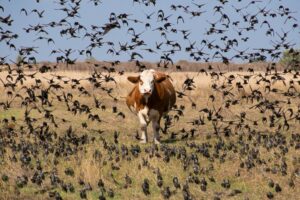
An Assault on Science
Art by Alondra Moreno Santana In 2022, the Heritage Foundation launched Project 2025 in anticipation of a second Trump presidency. Outlined in the initiative’s policy

Art by Alondra Moreno Santana In 2022, the Heritage Foundation launched Project 2025 in anticipation of a second Trump presidency. Outlined in the initiative’s policy

Image courtesy of Virginia Retail via Flickr On February 13, 2025, the US Senate confirmed Robert F. Kennedy Jr. as Secretary of Health and Human

Photography by Michelle So After studying molecular biology and comparative theology, 2025 Rhodes Scholar Angelin T. Mathew ’25 is dedicated to integrating medicine and spirituality

The space industry, once dominated by government agencies and aerospace giants, is undergoing a seismic shift. With dramatic reductions in payload costs, influx of private

Image courtesy of Lorie Shaull via Flickr. What are the most pressing and controversial issues in the United States? There are a lot of issues

Photography by Rachel Mak In Thinking 101: How to Reason Better to Live Better, Yale psychology professor Woo-kyoung Ahn explores cognitive fallacies and biases that

Image courtesy of Péter Kövesi via Pexels. On March 25, 2024, the USDA, CDC, and FDA confirmed that a new strain of avian influenza virus

Image courtesy of JLS Photography Alaska via Flickr Amidst a fire-ravaged landscape, a bright pink substance stands out: Phos-Chek WD-881. Typically dispensed aerially, Phos-Chek slows

When people think of women’s health, the first thing that comes to mind is often pregnancy and reproductive issues. This, however, is a misconception that

To audiences spanning single Yalies to grown adults on reality shows, Yale alum Pepper Schwartz GSAS ’74 advises: “Don’t be afraid of love.” Schwartz, a

Since 1960, many women have shouldered the daily burden of hormonal birth control, facing side effects ranging from nausea to an increased risk of heart

Image courtesy of Pexels. The vagina, periods, and sex are all normal parts of many women’s lives. However, in everyday conversation, these words are often